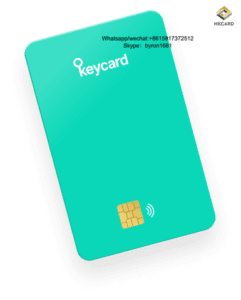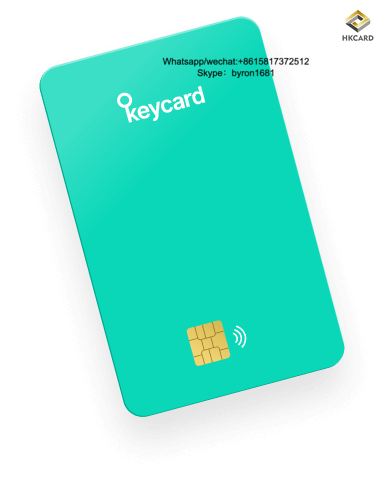Introduction
In today’s rapidly evolving digital landscape, the need for secure and efficient identification systems has become paramount. Smart cards have emerged as a groundbreaking solution, revolutionizing the way we authenticate and safeguard our personal information. At HKCARD, we understand the significance of smart cards and their impact on various industries. In this article, we will explore the features, benefits, and applications of smart cards, highlighting their role in enhancing security and convenience.
Table of Contents
- What are Smart Cards?
- How Do Smart Cards Work?
- Types of Smart Cards
- Benefits of Smart Cards
- Applications of Smart Cards
- Enhancing Security with Smart Cards
- Smart Cards in the Financial Sector
- Smart Cards in Government and Public Services
- Smart Cards in Healthcare
- Smart Cards in Transportation
- Smart Cards in Access Control
- Smart Cards in Education
- The Future of Smart Cards
- Conclusion
- FAQs
1. What are Smart Cards?
Smart cards, also known as chip cards or integrated circuit cards (ICCs), are pocket-sized plastic cards embedded with an integrated circuit chip. These chips store and process data, enabling secure authentication and data exchange between the card and a card reader. Unlike traditional magnetic stripe cards, smart cards offer enhanced security features, making them ideal for various applications.
2. How Do Smart Cards Work?
Smart cards employ a contact or contactless interface to communicate with a card reader. In a contact-based system, the smart card must be physically inserted into a card reader, establishing a direct connection. On the other hand, contactless smart cards use radio frequency identification (RFID) technology to communicate wirelessly with a compatible reader, eliminating the need for physical contact.
The embedded microchip on a smart card securely stores and processes data, which can include personal identification information, cryptographic keys, or even biometric data. When a smart card is inserted or placed near a card reader, the reader sends a challenge to the card. The microchip on the smart card performs the necessary computations using its internal software, verifies the authenticity of the card, and provides the requested information.
3. Types of Smart Cards
Smart cards come in various forms, each tailored to specific requirements. Some common types of smart cards include:
Memory Cards
Memory cards, also known as chip memory cards, store data but do not possess advanced computing capabilities. They are commonly used for applications where data storage and retrieval are the primary requirements, such as prepaid phone cards or transportation cards.
Microprocessor Cards
Microprocessor cards, or CPU cards, contain a microprocessor chip capable of executing complex computations. These cards are commonly used in applications requiring secure data processing, such as electronic passports or payment cards.
Contact Cards and Contactless Cards
Contact cards require physical contact with a card reader to establish communication. They are widely used in applications where enhanced security is necessary, such as identification cards or access control systems.
Contactless cards, as the name suggests, communicate wirelessly with a card reader using RFID technology. They offer convenience and speed, making them suitable for applications like public transportation or event ticketing.
4. Benefits of Smart Cards
Smart cards offer numerous advantages over traditional identification systems. Here are some key benefits:
Enhanced Security
Smart cards employ advanced encryption algorithms and secure storage methods to protect sensitive information. The integration of microprocessors enables secure computations, making it extremely difficult for unauthorized parties to access or tamper with the stored data.
Increased Convenience
Smart cards consolidate multiple functionalities into a single card, eliminating the need for carrying multiple physical documents or cards. For instance, a smart card can serve as an identification card, access card, and payment card, streamlining processes and reducing the burden on individuals.
Improved Efficiency
With smart cards, authentication processes can be automated, reducing the reliance on manual verification. This leads to improved operational efficiency, shorter transaction times, and enhanced user experiences.
Cost Savings
While the initial implementation costs of smart card systems may be higher compared to traditional systems, the long-term benefits outweigh the investment. Reduced fraud, increased operational efficiency, and improved customer satisfaction contribute to cost savings in the long run.
5. Applications of Smart Cards
Smart cards have found applications across various industries, transforming the way businesses and organizations operate. Let’s explore some key areas where smart cards have made a significant impact:
Enhancing Security with Smart Cards
Smart cards have revolutionized security systems by providing robust authentication and access control mechanisms. Whether it’s securing physical premises, data access, or digital transactions, smart cards play a crucial role in safeguarding sensitive information.
Smart Cards in the Financial Sector
Banks and financial institutions have adopted smart cards to enhance the security and convenience of their services. Smart cards are used for secure payment transactions, ATM access, and online banking, ensuring protection against fraudulent activities.
Smart Cards in Government and Public Services
Governments worldwide are leveraging smart cards for various purposes. These include national identification cards, electronic passports, driver’s licenses, and healthcare cards. Smart cards enable efficient administration, reduce identity fraud, and streamline public service delivery.
Smart Cards in Healthcare
In the healthcare sector, smart cards are used to store and manage patients’ medical information securely. Electronic health cards enable quick access to medical records, facilitate accurate diagnosis, and improve patient care and safety.
Smart Cards in Transportation
Smart cards have transformed the way we pay for and access transportation services. From contactless payment cards for buses and trains to toll collection systems, smart cards offer a convenient and efficient way to manage transportation networks.
Smart Cards in Access Control
Smart cards are extensively used for access control in various settings, such as corporate offices, educational institutions, and government buildings. By utilizing smart cards for authentication, organizations can ensure secure entry, protect assets, and maintain strict access policies.
Smart Cards in Education
In the education sector, smart cards are employed for multiple purposes. They can be used as student identification cards, library cards, or even as payment cards within campus premises. Smart cards streamline administrative processes, enhance campus security, and improve overall efficiency.
13. The Future of Smart Cards
The future of smart cards looks promising, with continued advancements in technology and increased adoption across industries. As security concerns grow, smart cards will play an increasingly vital role in safeguarding personal information, ensuring secure transactions, and protecting sensitive data.
The integration of biometric authentication, such as fingerprint or facial recognition, will further enhance the security of smart cards. Additionally, the development of contactless and mobile-based smart card solutions will provide even more convenience and accessibility.
Conclusion
Smart cards have transformed the way we authenticate, identify, and secure our personal information. With their advanced security features, convenience, and versatility, smart cards have become an integral part of various industries, including finance, government, healthcare, transportation, and education. As technology advances, smart cards will continue to evolve, offering enhanced security, improved efficiency, and an enhanced user experience.
FAQs
Q1: Are smart cards secure?
Yes, smart cards employ advanced encryption algorithms and secure storage methods, making them highly secure. The integration of microprocessors enables secure computations, reducing the risk of unauthorized access or tampering.
Q2: Can smart cards be used for contactless payments?
Yes, contactless smart cards are widely used for secure and convenient payment transactions. They utilize RFID technology to communicate wirelessly with compatible card readers, enabling quick and hassle-free payments.
Q3: Can smart cards store biometric data?
Yes, smart cards can store biometric data such as fingerprints or facial recognition templates securely. This enhances the authentication process and provides an additional layer of security.
Q4: What are the cost benefits of implementing smart card systems?
While the initial implementation costs of smart card systems may be higher compared to traditional systems, they offer long-term cost benefits. Reduced fraud, increased operational efficiency, and improved customer satisfaction contribute to overall cost savings.
Q5: How are smart cards used in the healthcare sector?
Smart cards are used in the healthcare sector to store and manage patients’ medical information securely. Electronic health cards enable quick access to medical records, facilitate accurate diagnosis, and improve patient care and safety.
HKCARD ELECTRONICS CO.,LIMITED is your best choice for smart card manufacturing.
Best Regards
Byron
HKCARD ELECTRONICS CO.,LIMITED
Phone/Whatsapp/wechat:+8615817372512
skype:byron1681
Email:byronhan@cardmfg.com /byronhan1@gmail.com


